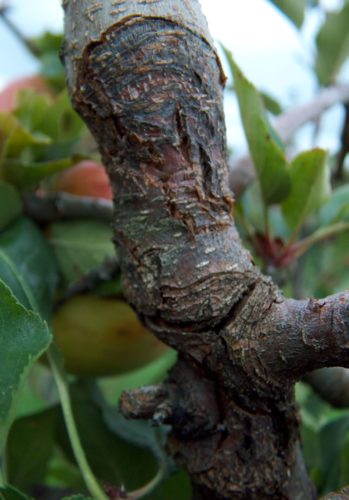Nectria canker is caused by a fungus that usually invades the tree in autumn through leaf scars and pruning wounds.
Also known as:
Apple canker
Nectria canker (Neo
Infestation begins with deepening and darkening of the bark; tree cells die and sap flow is interrupted. Then cancer spots and proliferation occur. A canker on the trunk can kill the tree.
In spring and summer, in wet and humid weather, the fungus spreads its spores: these can cause neonectria on fruit.
The fungus can also be spread by the woolly apple aphid (Eriosoma lanigerum).
Control
Remove affected branches, cut affected areas on the trunk and structural branches. Protect pruning and cutting wounds with wound balm.
Prevention
Ensure good drainage and keep the heart of fruit trees open so that the wind has free rein. Prevent branches from rubbing past each other causing damage. Decontaminate used pruning tools.
Earwigs, parasitoid wasps and gall midges are the natural enemies of the woolly apple aphid, the insect that helps spread fungus. So do not destroy these insects.

